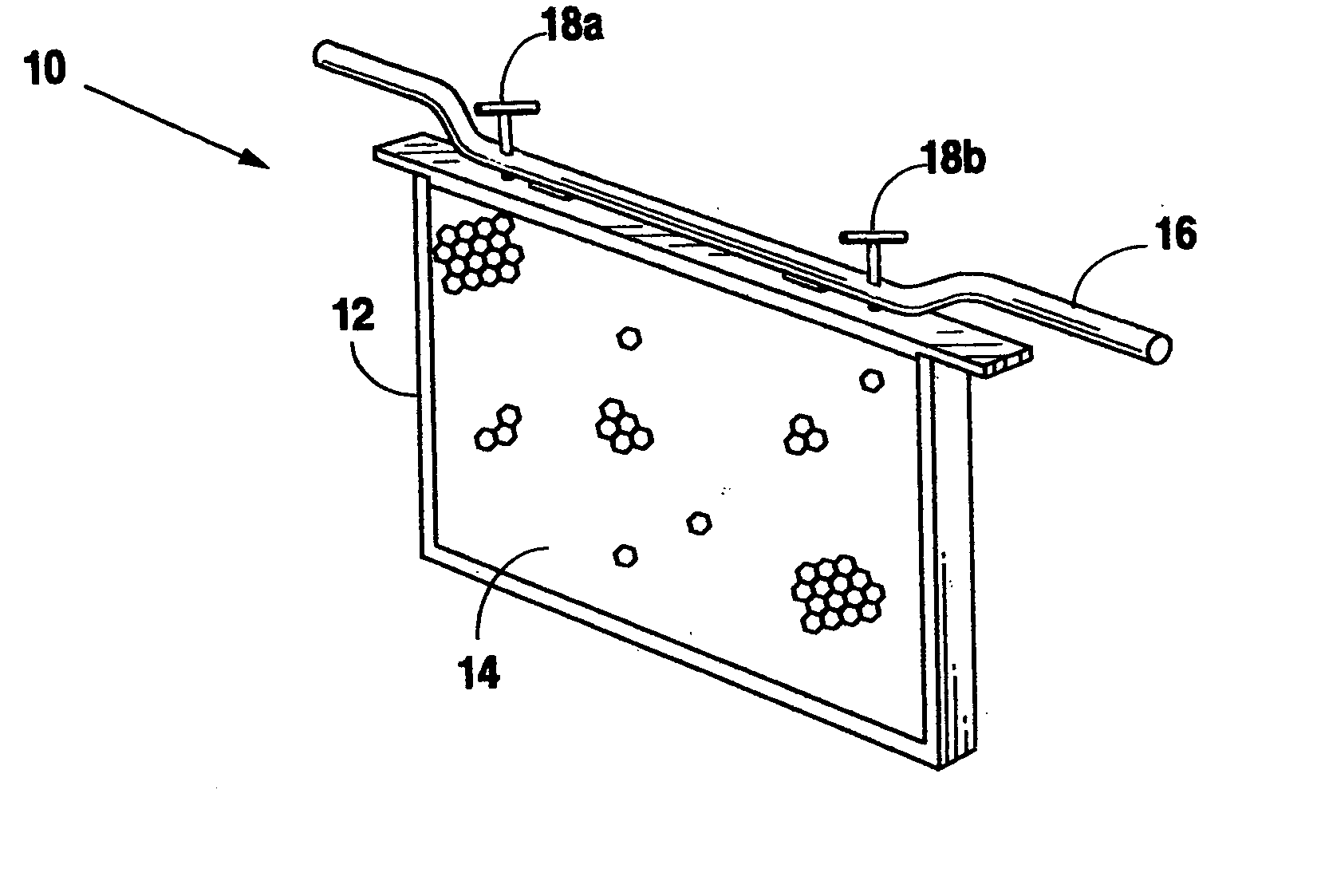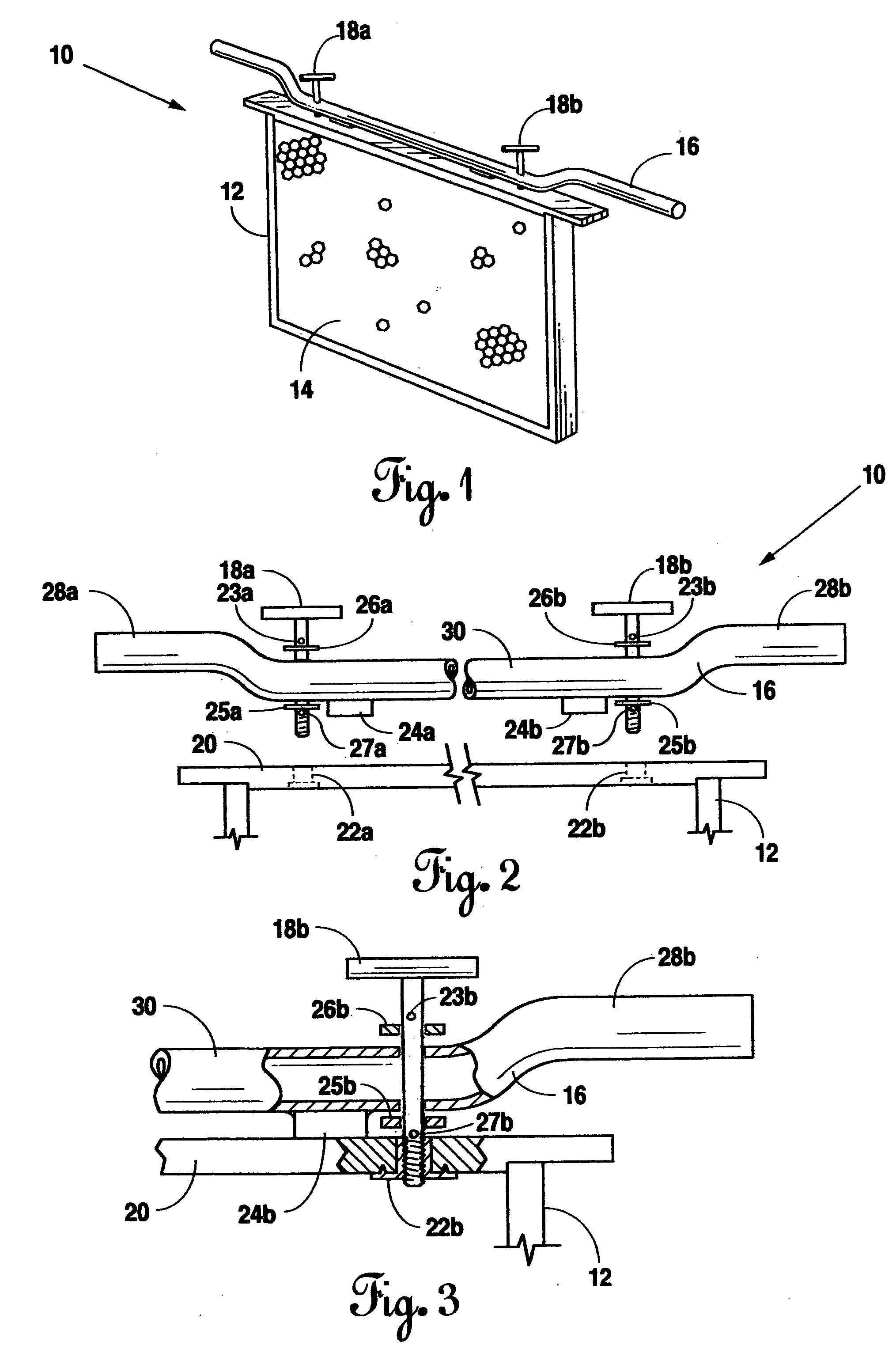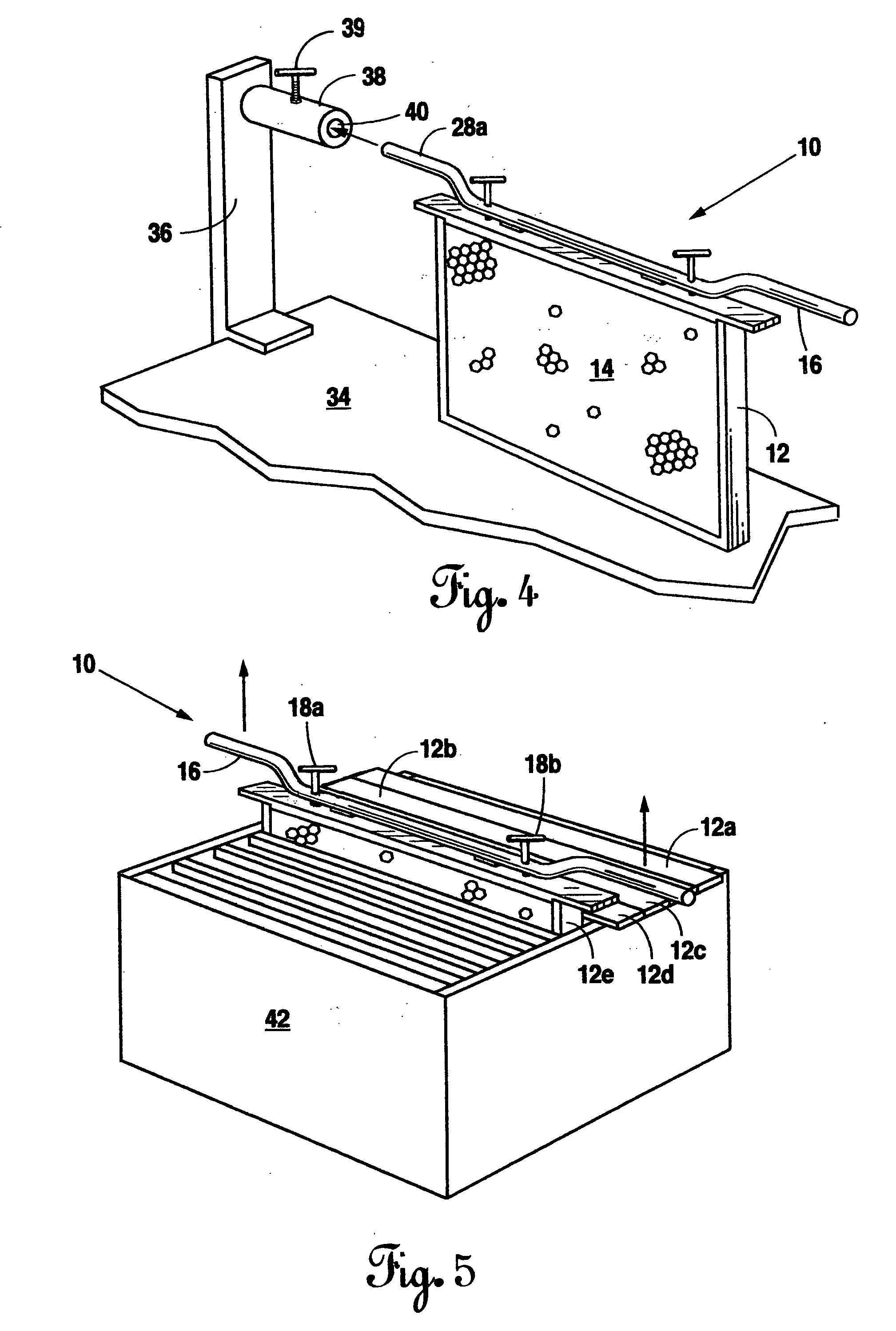Method and apparatus for the removal and handling of honey frames from beehive boxes
a technology for beehives and frames, applied in the field of apiculture, can solve the problems of difficult access for beekeepers to the edges of the top plate of the frame, extreme complexity of most automated systems, and hardly suitable individual beekeepers, so as to facilitate the removal of the frame and increase the force
- Summary
- Abstract
- Description
- Claims
- Application Information
AI Technical Summary
Benefits of technology
Problems solved by technology
Method used
Image
Examples
Embodiment Construction
[0025] Reference is made first to FIG. 1 for a description of the basic structure of the present invention and the manner in which it is attached to the improved honey frame. Frame handle 10 is positioned as shown on hive frame 12 containing foundation 14. Frame handle 10 comprises handle bar 16 and T-bolts 18a and 18b. Handle bar 16 may, in the preferred embodiment, be constructed of tubular metal bent into the configuration shown so as to provide for easing gripping by the beekeeper. Its length should be somewhat longer than the standard honey frame, and its width should be slightly less than the typical width of a honey frame top plate.
[0026] Two or more T-bolts 18a and 18b are positioned through handle bar 16 with the winged portions of the bolts positioned above the handle bar. In this manner, the threaded portions of T-bolts 18a and 18b are positioned to engage threaded apertures (not shown) that have previously been positioned within the top plate of frame 12.
[0027]FIG. 2 s...
PUM
 Login to View More
Login to View More Abstract
Description
Claims
Application Information
 Login to View More
Login to View More - R&D
- Intellectual Property
- Life Sciences
- Materials
- Tech Scout
- Unparalleled Data Quality
- Higher Quality Content
- 60% Fewer Hallucinations
Browse by: Latest US Patents, China's latest patents, Technical Efficacy Thesaurus, Application Domain, Technology Topic, Popular Technical Reports.
© 2025 PatSnap. All rights reserved.Legal|Privacy policy|Modern Slavery Act Transparency Statement|Sitemap|About US| Contact US: help@patsnap.com



